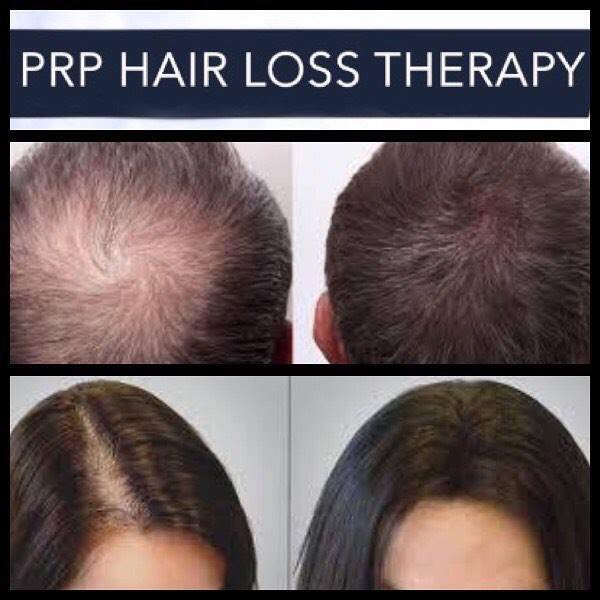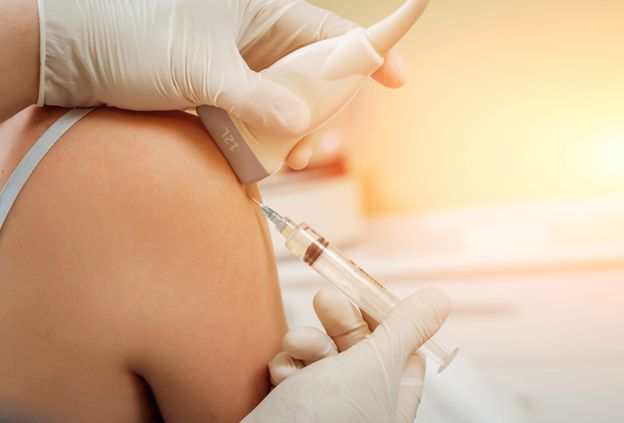✦WHAT IS PRP?✦
As we know, our blood is mainly a liquid called plasma which contains small solid components of red cells, white cells, and platelets. Platelets are best known for their importance in clotting blood. However, platelets also contain hundreds of proteins called growth factors that are very important in the healing of skin.
PRP is where beauty meets science! For this treatment, blood must be drawn first from the patient. We then reinject your own blood plasma into the skin to leave you with a reduced appearance of fine lines, wrinkles, increased collagen production, tighter and firmer skin, prominent hair growth, and much more!
PRP is also known to be given for many types of injuries.
Many of our clients receive PRP in their face and areas where they desire increased hair growth as well.
Call us today to schedule a free consultation to see what we can do for you and ask about our specials!
✦WHAT IS PRP INJECTION?✦

After creating platelet-rich plasma from a patient's blood sample, that solution is injected into the target area, such as an injured knee, a tendon, or your face. The idea is to increase the concentration of specific bioproteins or hormones, called growth factors, in a specific area to accelerate the healing process.
Studies show that the increased concentration of growth factors in a platelet-rich plasma may stimulate or speed up the healing process, shortening healing time for injuries, decreasing pain, reduce the appearance of lines, wrinkles, and even encouraging hair growth!
✦PRP FOR HAIR RESTORATION✦

PRP injections help stimulate the regeneration of your follicular cells and also helps improve their health and function. Healthy follicles are able to produce thicker and stronger hair at a faster rate.
if your hair has become visibly thinner, or you notice a receding hairline, a consultation can be made. It can take several weeks for you to see the full benefits of PRP therapy. You should see an increase in hair growth within a few weeks of your treatment as your follicles improve.
In general, PRP therapy is safe and effective for treating hair loss!
✦PRP FOR INJURIES✦

Platelets are "helper" cells that come to your rescue when you have an injury. Platelets also contain growth factors, a type of protein that helps grow new cells, repair tissues and reduce inflammation. It's these growth factors that are though to help initiate healing in certain cases.
Here are some examples PRP therapy is good for are :
Tendon injuries; Tendons are tough, thick bands of tissue that connect muscle to bone. They are usually slow to heal after an injury which is why PRP injections are used to treat chronic tendon problems such as tennis elbow, Achilles tendonitis at the ankle, and jumper's knee.
Acute Injuries; PRP injections are used to treat acute sports injuries, such as pulled hamstring muscles or knee sprains.
Postsurgical repair; PRP injections after surgery are used to repair a torn tendon (such as a rotator cuff tendon in the shoulder) or ligaments (such as the anterior cruciate ligament)
Osteoarthritis; PRP injections in the knee may help people with osteoarthritis. It can an improvement in pain, joint stiffness, and activities of daily living, as well as aids in the repair and regeneration of articular cartilage.
✦PRP FOR SKIN REJUVENATION✦

PRP facial rejuvenation naturally stimulates your body's own collagen production and it takes about three months for maximum collagen regeneration to occur. Most patients notice an improvement in their skin texture in the first month after treatment.
The wonderful benefits of PRP skin rejuvenation are:
- Stimulates collagen production
- Plump sagging skin
- Diminish acne scars
- Treat hyperpigmentation
The results of PRP rejuvenation are long term with most patients receiving touch up treatments at one year to further stimulate collagen production and continued facial rejuvenation.
✦PRP COMBINED WITH RF MICRONEEDLING✦

Aging and skin damage are two of the most common concerns our providers hear. While many procedures can treat each, the best procedures can treat aging and damaged skin. In addition, our master estheticians combined powerful, medical grade skincare with platelet rich plasma to improve results. One way our estheticians effectively treat aging, damaged, and sagging skin is by combining radiofrequency microneedling with platelet rich plasma (PRP).
Both combined treatments are best to treat:
- Acne scars
- Strecth marks
- Fine lines and wrinkles
- Large pores
- Cystic acne
- Redness
- Inflammation (depending on cause)
- Hyperpigmentation
- Rough skin texture
- Uneven skin tone
✦WHO IS A GOOD CANDIDATE?✦
There are no bad candidates for PRP treatment. Only better candidates. Anyone, regardless of their health, can respond to PRP therapy. However, the better your health, the more likely you will respond. For instance, people who smoke, have diabetes, or other chronic diseases like thyroid disease or cardiorespiratory illness, are going to be less likely to respond.
Possible Reasons not to have PRP Treatment:
- Cancer/ Metastic Disease
- Thrombocytopenia
- Septicemia (blood infection)
- Antiplatelet Therapy
We always highly recommend getting a consultation with our specialist !
✦WHAT TO EXPECT✦
After your appointment, there is a chance you may experience some mild to moderate discomfort at the injection site. You may also have some soreness and tenderness at the area of the injections for a few days. This soreness and some swelling can last three to seven days, and then movement and comfort at the joint gradually increases over two weeks. This is how your body is responding to the injections! Your specialist will recommend that you rest the affected area. This advice is more a matter of being careful with the treated injury than a response to the actual injections. Most people can continue their daily activities immediately following PRP therapy.
Just drink plenty of water to promote healing !
✦PRE-CARE✦
When scheduling your appointment with one of our nurses, you will be told what you can and can't do before your PRP appointment. During this time, please do not hesitate to ask any questions! Your specialist will tell you what you should and shouldn't do before and after your appointment and will work with you to make sure you understand each step of the way.
In general, you should:
- Not take aspirin unless prescribed, for at least 1 week before the procedure
- Avoid Alcoholic beverages the day before your treatment
- Diet before Procedure; A light meal before arriving at the office and avoid caffeine
- Hydrate; you should drink at least 8 glasses of water 24 hours before your treatment and at least 12 ounces of water the morning of your treatment
- Avoid makeup, retinoids, glycolic acids, vitamin C products for 1 week before your procedure
✦POST-CARE✦
For 3 days after the procedure:
- Don't raise your body temperature intrinsically or extrinsically (No sauna, hot tub, or Jacuzzi)
- Don't perform intense exercise(where you sweat a lot)
- Do not apply makeup
- Do not expose yourself to long periods in the sun
- Don't pick at any crusting or blisters
- Avoid exfoliation for the first 7 days
- Keep your skin moist at all times using a gentle moisturizer with an SPF of at least 30
- Avoid products with harsh chemicals and exfoliants like Retinol, glycolic acids, AHAs, BHAs, etc.
- Oxygenetix post procedure makeup with sun screen is recommended as coverup makeup (if needed post-procedure)
For Treatments involving face or lip area:
- Do not drink very hot or cold beverages for 3 days
- Do not undergo other cosmetic treatments such as chemical peels, laser treatments, etc, for at least one month
Post care for PRP (combined with microneedling )
- Do not wash your skin for 5 hours after treatment
- Do not swim or undertake in any strenuous exercise or activity that may cause sweating for 5 hours
- Do not expose to skin for 5 hour
✦POTENTIAL SIDE EFFECTS✦
In some very rare cases, slight side effects may occur: redness, local swelling, edema, local pain. These should not last more than a few hours, but can last up to a few days. These are normal treatment consequences. In case of local infection, antibiotics may be prescribed. Nevertheless, immediately contact your treating provider with any questions.

